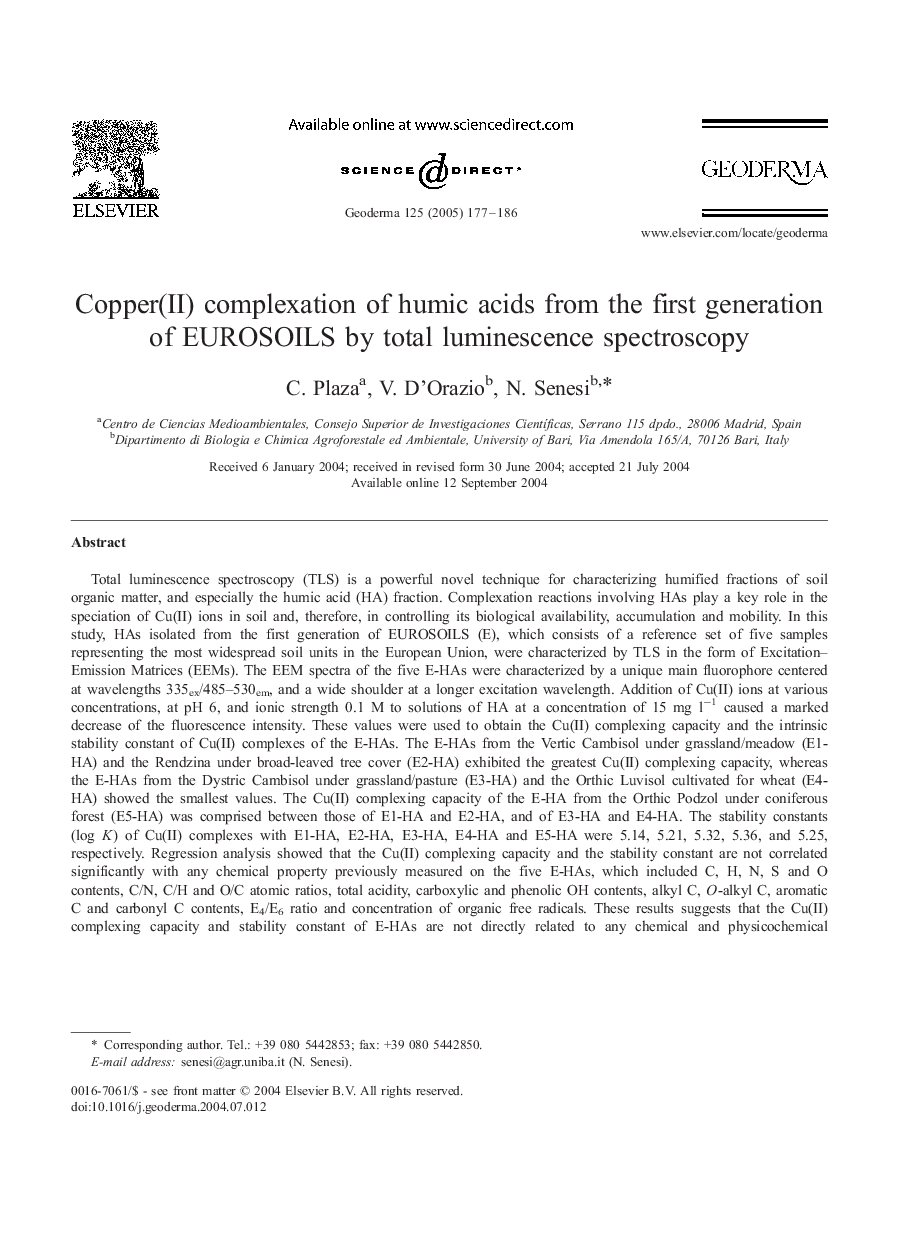| Article ID | Journal | Published Year | Pages | File Type |
|---|---|---|---|---|
| 9490638 | Geoderma | 2005 | 10 Pages |
Abstract
Total luminescence spectroscopy (TLS) is a powerful novel technique for characterizing humified fractions of soil organic matter, and especially the humic acid (HA) fraction. Complexation reactions involving HAs play a key role in the speciation of Cu(II) ions in soil and, therefore, in controlling its biological availability, accumulation and mobility. In this study, HAs isolated from the first generation of EUROSOILS (E), which consists of a reference set of five samples representing the most widespread soil units in the European Union, were characterized by TLS in the form of Excitation-Emission Matrices (EEMs). The EEM spectra of the five E-HAs were characterized by a unique main fluorophore centered at wavelengths 335ex/485-530em, and a wide shoulder at a longer excitation wavelength. Addition of Cu(II) ions at various concentrations, at pH 6, and ionic strength 0.1 M to solutions of HA at a concentration of 15 mg lâ1 caused a marked decrease of the fluorescence intensity. These values were used to obtain the Cu(II) complexing capacity and the intrinsic stability constant of Cu(II) complexes of the E-HAs. The E-HAs from the Vertic Cambisol under grassland/meadow (E1-HA) and the Rendzina under broad-leaved tree cover (E2-HA) exhibited the greatest Cu(II) complexing capacity, whereas the E-HAs from the Dystric Cambisol under grassland/pasture (E3-HA) and the Orthic Luvisol cultivated for wheat (E4-HA) showed the smallest values. The Cu(II) complexing capacity of the E-HA from the Orthic Podzol under coniferous forest (E5-HA) was comprised between those of E1-HA and E2-HA, and of E3-HA and E4-HA. The stability constants (log K) of Cu(II) complexes with E1-HA, E2-HA, E3-HA, E4-HA and E5-HA were 5.14, 5.21, 5.32, 5.36, and 5.25, respectively. Regression analysis showed that the Cu(II) complexing capacity and the stability constant are not correlated significantly with any chemical property previously measured on the five E-HAs, which included C, H, N, S and O contents, C/N, C/H and O/C atomic ratios, total acidity, carboxylic and phenolic OH contents, alkyl C, O-alkyl C, aromatic C and carbonyl C contents, E4/E6 ratio and concentration of organic free radicals. These results suggests that the Cu(II) complexing capacity and stability constant of E-HAs are not directly related to any chemical and physicochemical parameter tested, thus suggesting that a combination of these parameters and/or steric effects may play an important role in Cu(II) binding to E-HAs.
Keywords
Related Topics
Physical Sciences and Engineering
Earth and Planetary Sciences
Earth-Surface Processes
Authors
C. Plaza, V. D'Orazio, N. Senesi,
